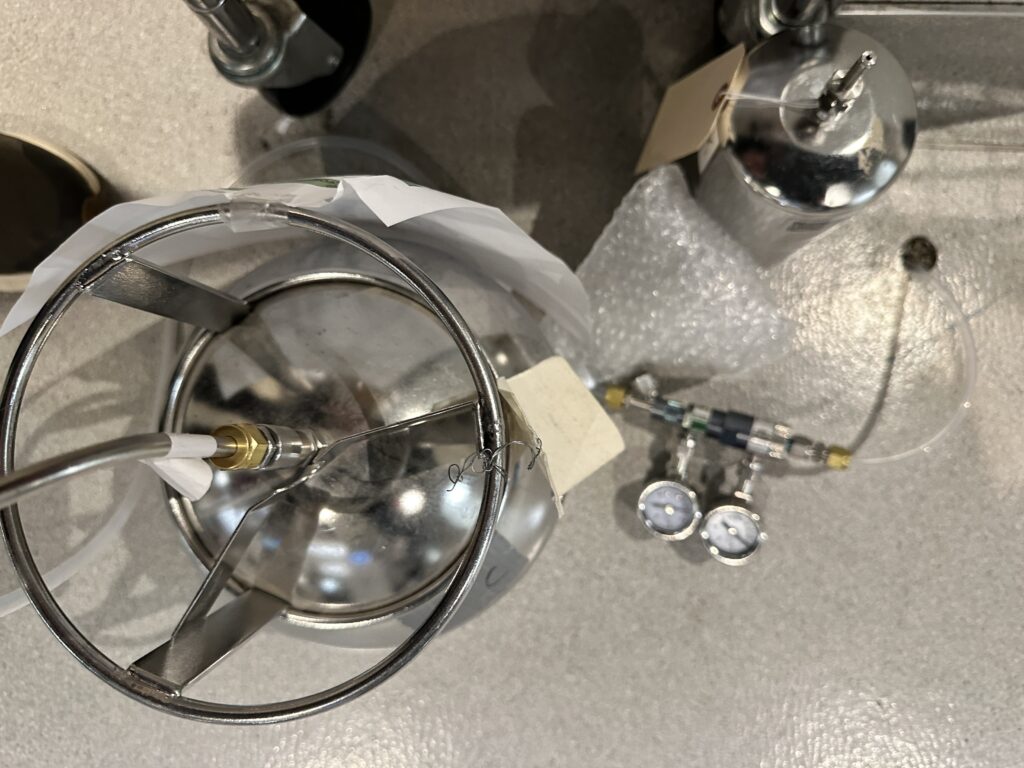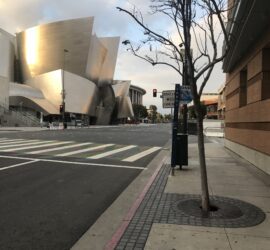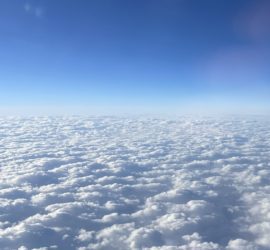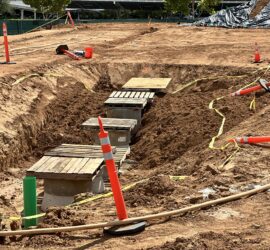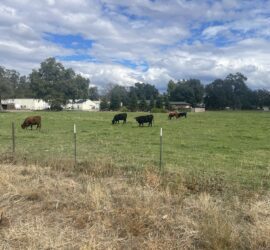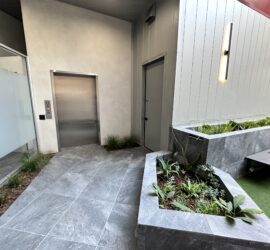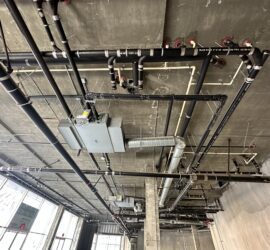Los Angeles Methane Testing Company
Geo Forward is a Los Angeles methane testing company with expertise in the codes and standards set forth by the City’s Building and Safety (LADBS) and County Public Works (LACPW) departments. The Los Angeles methane test team applies forward-thinking strategies to produce fast and efficient soil gas surveys, as well as cost-effective methane mitigation designs. And each project requires an emphasis on building code requirements, national testing standards, environmental safety, sustainability, and financial feasibility. Updated January 18, 2024.
City of Los Angeles Methane Testing Requirements
When considering construction in areas designated as special methane hazard zones, landowners must engage the services of a Los Angeles Methane Testing Company. This is a crucial step, as the Los Angeles Building Department (LADBS) requires a comprehensive understanding of methane gas concentrations beneath a given lot. By default, the LADBS mandates a Level-5 Methane Mitigation System as a precautionary measure. However, if certified Los Angeles Methane Testing reports reveal lower methane levels, the LADBS can adjust mitigation criteria, leading to cost-effective construction and enhanced safety measures. The Los Angeles Mitigation requirements can be reviewed in Ordinance No. 175790 and Ordinance No. 180619.
How to Read the Los Angels Methane Zone Map
Los Angeles establishes Methane Buffer Zones and Methane Zones based on proximity to landfills and petroleum resources. Construction projects in these areas require Level-5 Mitigation Systems unless certified testing indicates lower levels. Other government agencies apply similar mitigation standards.
Methane Buffer Zones and Methane Zones serve as indicators of a property’s proximity to landfills and petroleum reserves. The primary factors influencing the presence of natural gas in the soil encompass historical oil fields, gas extraction wells, crude oil pipelines, storage ponds, and the emergence of natural petroleum deposits. This leads to variations in methane concentrations, with properties housing oil wells exhibiting heightened levels. Additionally, landfills contribute to methane hazards in the shallow layers of soil.
Understanding the Methane Testing Los Angeles Zone Boundaries
The diagram in the section below is a snapshot of the official LA City Methane Zone and Methane Buffer Zone Map. The purple areas represent “Methane Buffer Zones.” And the pink areas represent “Methane Zones.”
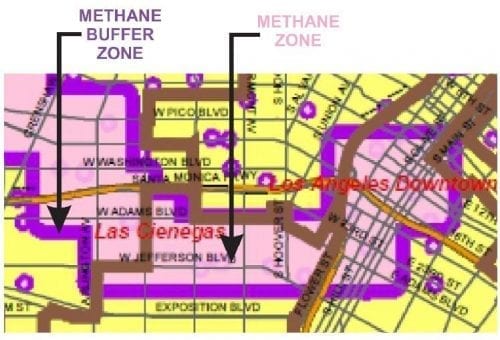
Finding an Official Methane Testing Los Angeles Agency
The City of Los Angeles maintains an official roster of certifiable testing consultants. Without valid certification, consultants are not authorized to perform methane testing and mitigation design services. The agency roster discloses each laboratory license number, area of practice, and contact information. Furthermore, the roster displays each laboratory license expiration date for consumer review.
Certificate for Methane Testing Los Angeles Agency
The City of Los Angeles tends to compile all certifiable testing laboratories (of various trades) into one roster. Oftentimes, consumers are misled into contacting welders or concrete tests when in need of methane testing. Thus, it is advised to use the “Find Tool” on your browser (Ctrl+f) to search the words “Methane Field Testing.” Additionally, consumers should also know the agency rosters lineup consultants in alphabetic order, and NOT the order of preference. Best practice suggests obtaining bids and price quotes from a variety of companies throughout the LADBS Methane Testing Consultant List.
Geo Forward is a Certified Methane Soil Gas Testing Laboratory & Methane Testing Company
Geo Forward is an accredited Los Angeles methane testing company specializing in methane soil gas surveys, as well as methane mitigation designs. This encompasses the City of Los Angeles, the County of Los Angeles, as well as other neighboring cities such as Long Beach, Yorba Linda, Huntington Beach, Sante Fe Springs, and more. Additionally, a Los Angeles methane testing company requires a licensed professional geologist on board, with certifications and credentials included in final reports.
Purpose of a Methane Test
Methane soil gas, being flammable, colorless, and odorless, poses potential hazards. With a chemical formula of “CH4,” methane is highly explosive. Concerns revolve around the explosive nature within living spaces and secondary worries about methane’s role as a simple asphyxiant, displacing oxygen and affecting breathing zones. The purpose of methane testing is to assess site-specific methane gas concentrations, ensuring safe construction by mitigating explosion hazards. Methane testing has evolved as a response to explosions in Los Angeles before the 1980s, leading to regulations enforced by the LADBS and LACPW.
What is the LADBS Methane Testing Procedure?
Building departments nationwide follow methane hazard test standards, often based on LADBS guidelines. Methane soil test standards ensure the quality of assessments, and additional laboratory analysis may be required for concentrations exceeding 12,500 parts per million. For more information on how to test for methane gas underground, Geo Forward advises referring to LADBS Form IB/P/BC 2014-101 Site Testing Standards For Methane.
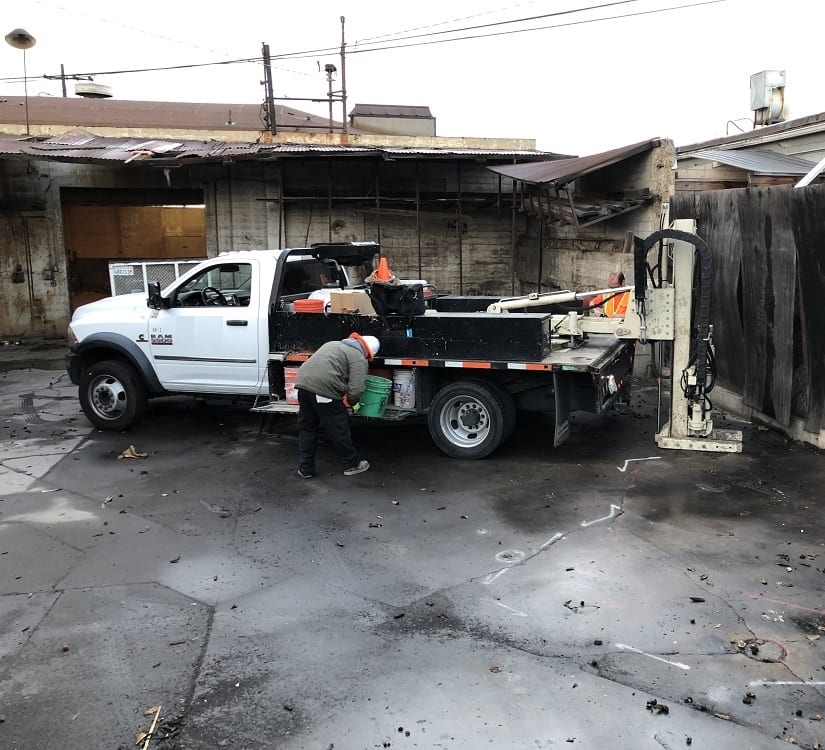
Drilling and Testing for Methane Gas in the Field
Methane testing involves drilling vapor probes, performing soil gas analysis with a flame ionization detector (FID), and constructing methane barriers based on the site-specific methane test report. Fieldwork includes geophysical surveys, utility mark-out, drilling boreholes, site mapping, soil sampling, and detailed soil logging. Decontamination between boreholes prevents cross-contamination. Shallow and deep soil gas probes are strategically installed, meeting ASTM, DTSC, and EPA guidelines. The construction adheres to Methane Testing Los Angeles Building Department Standards, ensuring accurate methane test results.
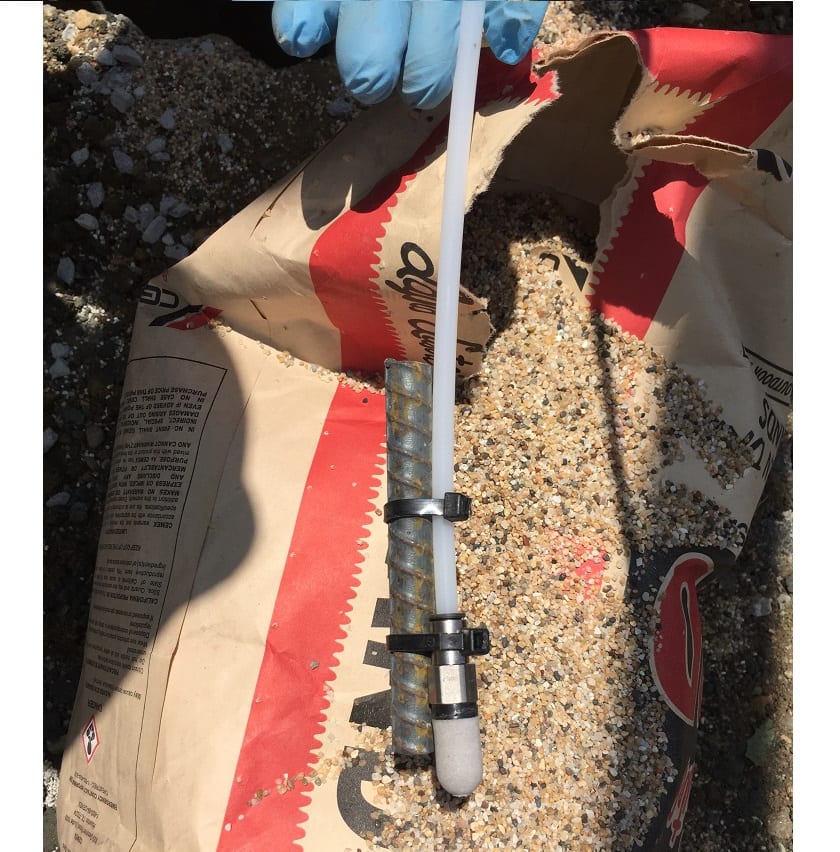
Soil Vapor Probe Sampling
Soil gas samples are collected and analyzed according to CalEPA and DTSC protocol. Multiple phases of sampling and analysis ensure quality assurance under Methane Testing Los Angeles Standards. Geologists analyze methane test data to determine site design levels, influencing mitigation system specifications. Five possible site design levels exist under current standards.
Reporting Methane Soil Test Results
Site-specific data is compiled into a comprehensive report, detailing standards, methods, equipment, findings, and visual representations. Reports determine the need for a methane mitigation system and provide parameters for the design.
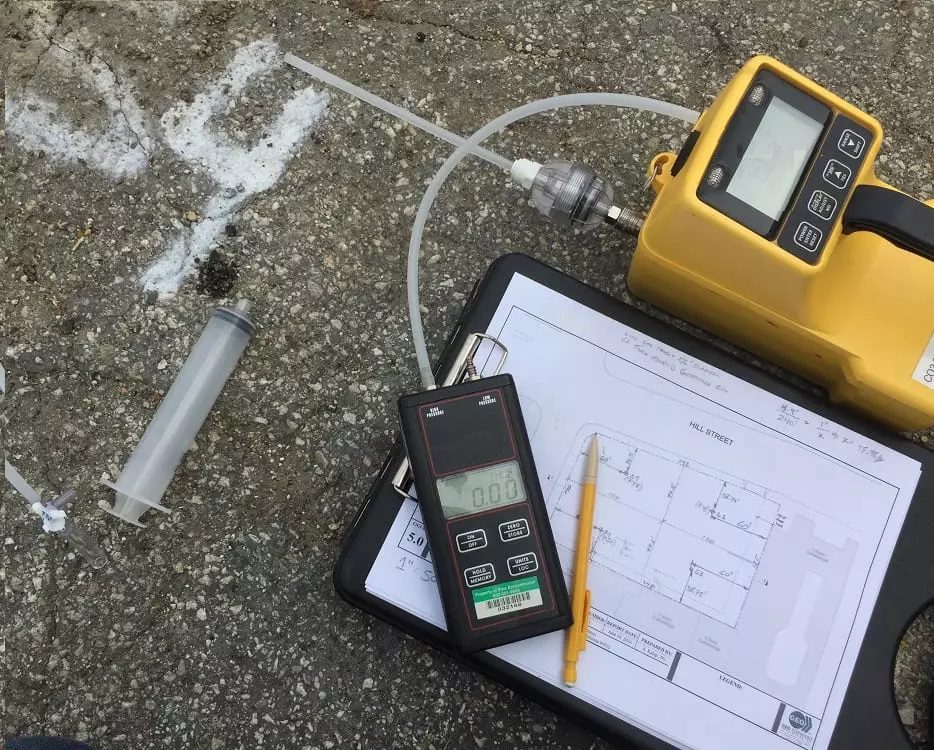
Methane Mitigation Design After Methane Testing
Final certificates reveal design methane concentration, pressure, and site design level, dictating mitigation criteria. Mitigation plans are custom designs requiring approval from building and fire departments.
Methane Barriers & Impervious Membranes
Methane testing identifies the need for methane barriers, vital for preventing soil gas entry. Mitigation plans consider factors like groundwater levels, necessitating waterproofing and de-watering barriers.
